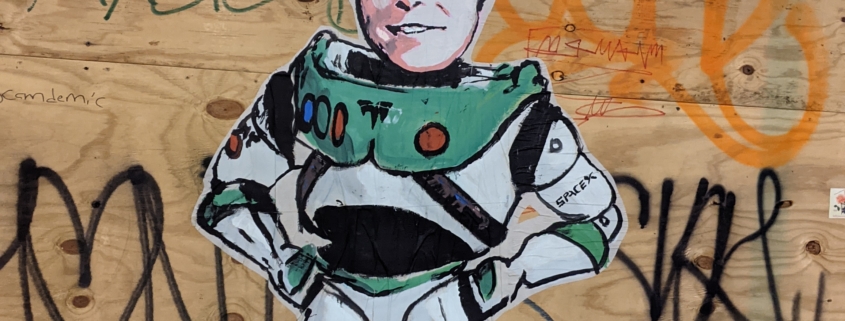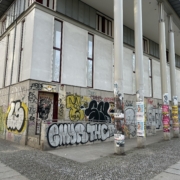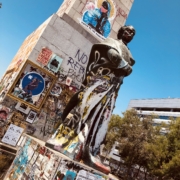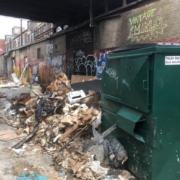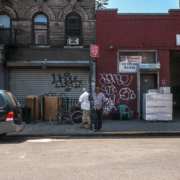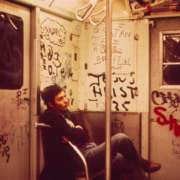Anti-Musk Graffiti & Street Art as a Rejection of Power, Capitalism, and Celebrity
Over the past two decades, tech billionaire Elon Musk—pivotal in the creation of PayPal, and founder of Tesla, SpaceX, and Neuralink, as well as owner of Twitter (now X)—has been both lavishly praised and sharply criticized.
Many tech aficionados, consider Musk to be a genius and similar to the Starship Enterprise, in the television series and movies Star Trek, idolized as someone willing to “boldly go where no one has gone before.”
But while some view Musk as a brilliant visionary, others see him as hypocritical in his words and actions.
Musk’s success is also intertwined with protracted labor struggles, negative environmental impacts, and the embodiment of unchecked political power.
He is frequently criticized for being reckless and attention-seeking, behaviors that led to his ousting from leadership roles at both PayPal and Tesla.
Recently, Musk has transitioned into one of second-term President Donald J. Trump’s most prominent and vocal supporters.
For a figure as polarizing as Musk, such alignments only make him more controversial.
Thus, it’s no surprise that Musk has become a subject of graffiti and street art, (not to mention negative light projection images), not just in the United States, but in selected cities around the world.
Much of this visual communication is not flattering.
Anti-Musk graffiti and street art is more than mere vandalism; it critiques the systems Musk represents—extreme wealth, inequality, labor exploitation, unchecked technological advancement, and environmental harm.
The Development of Anti-Musk Graffiti and Street Art
The rise of anti-Musk graffiti/street art is part of a broader trend where this type of urban art serves as a visual counter-narrative to the unchecked power of people, states, and things.
Throughout the world, in large urban centers, graffiti and street art has emerged as a tool for expressing public dissatisfaction, that also challenges the constant slick public relations and advertising campaigns supporting Silicon Valley elites and their corporations.
Musk’s ascent to global fame cast him as the “cool billionaire” — a maverick who wasn’t just in it for the money, but claimed to be changing the world. As Tesla became the leading manufacturer of electric cars, his net worth increased exponentially, as did public attention directed towards the negative business practices of his companies and his lifestyle.
The contradictions surrounding Musk, and his erratic behavior brought him under greater scrutiny. Many critiques, including numerous articles and respected books, began to challenge the previously flattering media narratives surrounding him.
Tesla’s drive to dominate the electric vehicle market initially garnered environmental praise, but labor practices, the environmental toll of lithium mining, and Musk’s controversial social media postings created a negative backlash.
As early as 2018, anti-Musk/Tesla graffiti could be seen in the Bay area (including Palo Alto, Freemont, and San Francisco). Initially graffiti writers were critical of Tesla’s work culture. Tesla factory workers facing grueling hours, difficult conditions, racism, sexism, and there were allegations of union-busting, Musk became a symbol of corporate exploitation.
In 2023, in San Francisco, graffiti writers responded by painting “Musk = Greed,” ”Elon Gentrifier,” and “Elon Sucks,” on all manner of surfaces, especially as Tesla’s expansion symbolized gentrification, income inequality, housing pressures, and social disruption attributed to the local area’s tech boom.
For environmental activists, his lifestyle — marked by private jets and opulent mansions — the support of lithium mining (used in the batteries of Tesla cars) in various countries represented a hypocrisy at odds with his public image of a planet-saving visionary.
In Berlin, where Tesla’s Gigafactory looms as both a symbol of technological advancement and environmental destruction. Although Tesla commissioned well-respected graffiti, street artists and muralists to paint large pieces on the side of the buildings, in 2021 graffiti, some of which included “Stop Tesla,” appeared questioning the factory’s impact on the local ecosystem.
In 2022, in Austin, Texas graffiti near Tesla’s headquarters, graffiti criticized the factory’s impact on local water and housing, with phrases like “Water for People, Not Profits.”
In 2022, when Musk was attempting to buy Twitter, he tried to portray himself as a free speech advocate. But after purchasing a controlling interest in Twitter (now X), this claim was quickly undermined when he banned certain accounts and individuals from the platform while removing guardrails on racists and other groups promoting harmful content. (Not to mention enabling Trump to return to this social media platform). His inflammatory posts on X did not serve to burnish his reputation. In 2022 anti-Musk street art started appearing in Hong Kong 2022) following his shifts in X policy, that would effectively censor anti-PRC content. In 2023, graffiti emerged in Brooklyn (2023) critiquing Musk’s layoffs and management style at X.
More recently, his private exchanges with Vladimir Putin (ostensibly an enemy of the United States), and involvement in the Ukraine conflict — particularly through his provision of satellite technology to Ukrainian forces (but denying access in certain strategic zones— have added to the animosity.
In June 2024, in Fort Lauderdale, 34 Tesla Cybertrucks were vandalized with graffiti, each one marked with the expression, “Fuck Elon.” It’s unclear whether the animosity was aimed specifically at Musk, Tesla, or a combination of both.
Ironically consumers can purchase a Cybertruck with a “graffiti wrap,” a eye-catching paint job that resembles hip hop style graffiti (another reminder of the co-optation and commodification of graffiti and street art).
Graffiti and Street Art as Resistance
The anti-Musk graffiti and street art do more than critique Musk as an individual; they critique the broader systems of capitalist (more specifically corporate) exploitation that he represents.
In this sense Musk, is not just the founder of numerous prominent tech companies, but the face of a new era of tech-driven capitalism in which billionaires like him accumulate vast amounts of wealth while the workers who make it possible remain underpaid and overworked, and environmental degradation is ignored (or minimized).
The slogan “Musk = Exploiter” scrawled on a wall is not just about Musk; it’s a condemnation of the entire model of labor and wealth generation that has come to define Silicon Valley. In this sense, the graffiti serves as a rejection not just of Musk’s persona, but of the societal framework that elevates billionaires like him to god-like status.
Graffiti and Street Art as a vehicle to call attention to Society’s Contradictions
Anti-Musk graffiti and street art isn’t just a protest against one man’s actions—it’s a critique of people and organizations like him, where the rich grow richer, and the planet’s resources continue to be depleted in the name of innovation.
It’s also a push back against the broader neoliberal system that enables figures like him to rise to prominence. Musk isn’t merely a tech mogul; he represents the contradictions central to modern capitalism: how acquiring wealth is often done at the expense of inequality, environmental degradation, and labor exploitation.
Some, but not all, graffiti and street art attempts to draw public attention to these contradictions.
In a world where the divide between the ultra-wealthy and powerful interests and the rest of the world grows wider, graffiti and street art remains an important weapon of the weak to offer a modicum of resistance to the people, organizations, and movements that threaten wider society.
photo credit
Photographer: Eden, Janine and Jim
Title: Musk Lightyear

